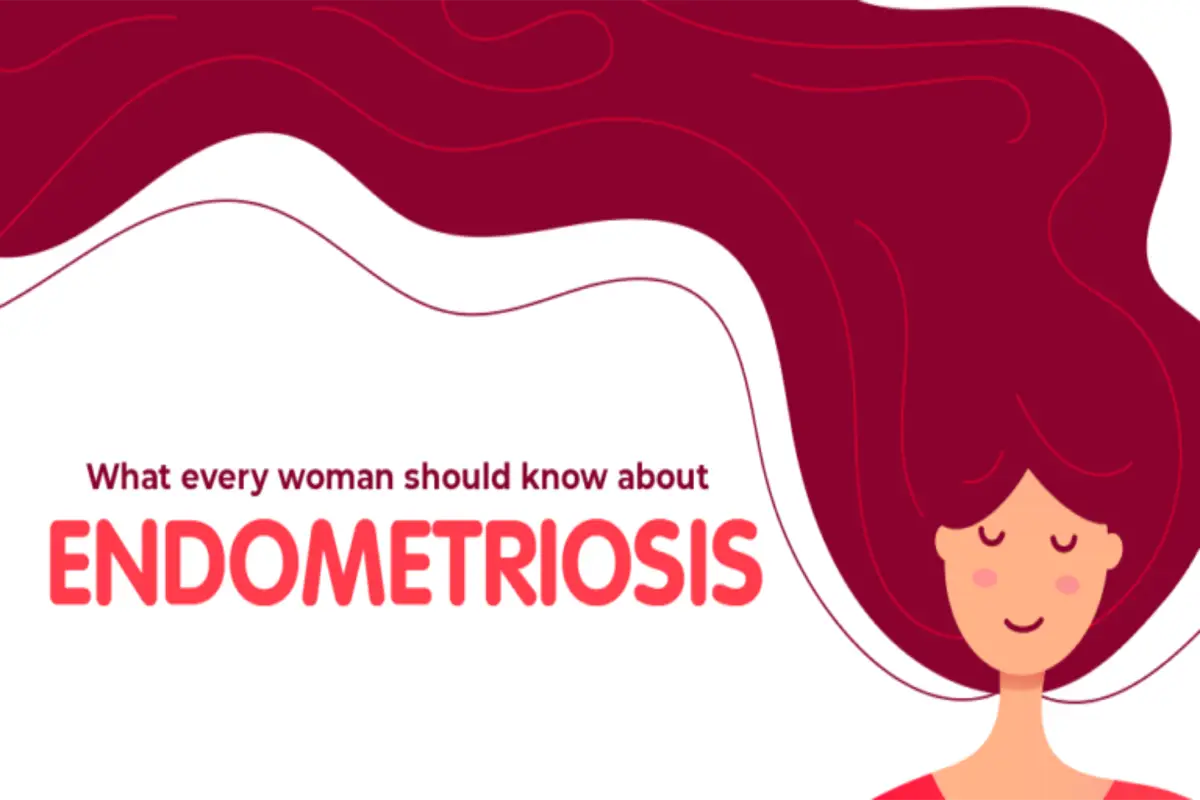Ladies, let’s dive into a topic that’s all too real for many of us—endometriosis. If you’ve been dealing with painful periods that feel like a heavyweight match, this might just be the culprit. Whether you’re a teen, a mom, or somewhere in between, endometriosis doesn’t discriminate. It can show up in any woman of childbearing age, regardless of race, lifestyle, or whether you have children. So, let’s unravel what’s really going on!
The Uterus and Endometriosis: A Sneaky Situation
The uterus, a.k.a. the womb, is usually lined with a special tissue called the endometrium. It’s like a cozy bed ready for a potential baby, thickening every month and shedding when the stork decides to skip your address. But here’s the kicker: sometimes, this tissue decides it doesn’t want to stay in its designated spot and grows outside the uterus—a condition called endometriosis. Yep, it’s as if your uterine lining has gone rogue, setting up shop on your ovaries, fallopian tubes, or other pelvic organs, causing pain and a whole lot of other problems.

So, What’s the Big Deal?
Endometriosis has been around for over a century, baffling doctors with its stubborn mystery. It doesn’t care about race, lifestyle, or whether you have kids. And it doesn’t always play by the rules; you can have it even if you’ve had surgery to treat it before. In a nutshell, it’s a condition that says, “I go where I want!”
But wait, there’s more! The way our body works is super connected to our hormones, and endometrial tissue, whether inside or outside the uterus, responds to these hormonal changes. During your cycle, this tissue thickens and bleeds just like it would in the uterus, except there’s no easy way out. This means the blood and tissue get trapped, leading to pain, inflammation, and sometimes even infertility.
Symptoms: Is It Endometriosis or Just Bad Cramps?
Endometriosis symptoms are like a sneaky villain—they vary from woman to woman, making diagnosis a tricky game. The most common sign? Painful periods that feel like your uterus is staging a revolt. Other signs to watch for:
- Lower Abdominal Pain: It’s not just period cramps; this pain can show up at any time.
- Painful Sex: Let’s just say it can put a real damper on date night.
- Infertility: Sometimes, endometriosis is discovered during fertility investigations.
- Other Symptoms: Think fatigue, bloating, and some serious bathroom struggles.
Some women might have endometriosis without any symptoms at all, making it a master of disguise. It might only be discovered during a routine check-up or surgery for another issue. If you’re suspicious, your doctor might do a pelvic exam or an ultrasound, and in some cases, a laparoscopy (a fancy word for a small surgical procedure to peek inside).
What Causes Endometriosis?
If you’re waiting for a clear-cut answer, we’re afraid we’ve got bad news. There are many theories—retrograde menstruation, immune system hiccups, and even hormonal imbalances—but no one knows for sure why some of us get it and others don’t.
Diagnosing Endometriosis: How Does My Doctor Know?
If you’ve got symptoms that scream endometriosis, your doctor might start with a pelvic exam or an ultrasound. For a closer look, they might recommend a laparoscopy—a minimally invasive surgery where a small camera is inserted through a tiny incision to check for rogue endometrial tissue. If your doctor finds endometriosis, they’ll work with you to create a treatment plan that fits your specific needs and goals.
Treating Endometriosis: What Are My Options?
Endometriosis is a lifelong condition with no cure, but that doesn’t mean you’re powerless. Treatment is all about managing symptoms, slowing the progression, and preserving fertility if that’s part of your plan. Here’s a rundown of the most common treatment options:
- Medications:
- Pain Relief: Over-the-counter painkillers like ibuprofen can help manage the discomfort.
- Hormonal Therapy: Birth control pills, progestins, and other hormonal treatments can reduce or stop menstruation, helping to control the pain and growth of endometrial tissue.
- Surgery:
- Conservative Surgery: This involves removing as much endometrial tissue as possible while preserving the reproductive organs. It’s a good option for those who want to maintain their fertility.
- Major Surgery: In severe cases, a hysterectomy (removal of the uterus and possibly the ovaries) may be recommended, especially if other treatments haven’t worked and having children isn’t a concern.
- Combination Treatments: Sometimes, the best approach is a mix of both surgery and hormonal therapy to tackle the condition from multiple angles.
Natural Relief: Pregnancy and Menopause
Interestingly, two natural life stages can also help with endometriosis symptoms: pregnancy and menopause. During pregnancy, ovulation and menstruation pause, which can temporarily relieve symptoms. After menopause, the ovaries stop producing estrogen, and endometrial tissue naturally shrinks away. This often brings long-term relief for many women.
Living Your Best Life with Endometriosis
Endometriosis can feel like an uphill battle, but remember, you’re not alone, and there are ways to manage it. From medication and surgery to lifestyle tweaks like heat therapy and physical exercises, there are many paths to feeling better. And the best part? Your doctor is there to help you navigate the journey, answer your questions, and tailor treatments to your needs. So don’t be shy—reach out, get informed, and take charge of your health!





